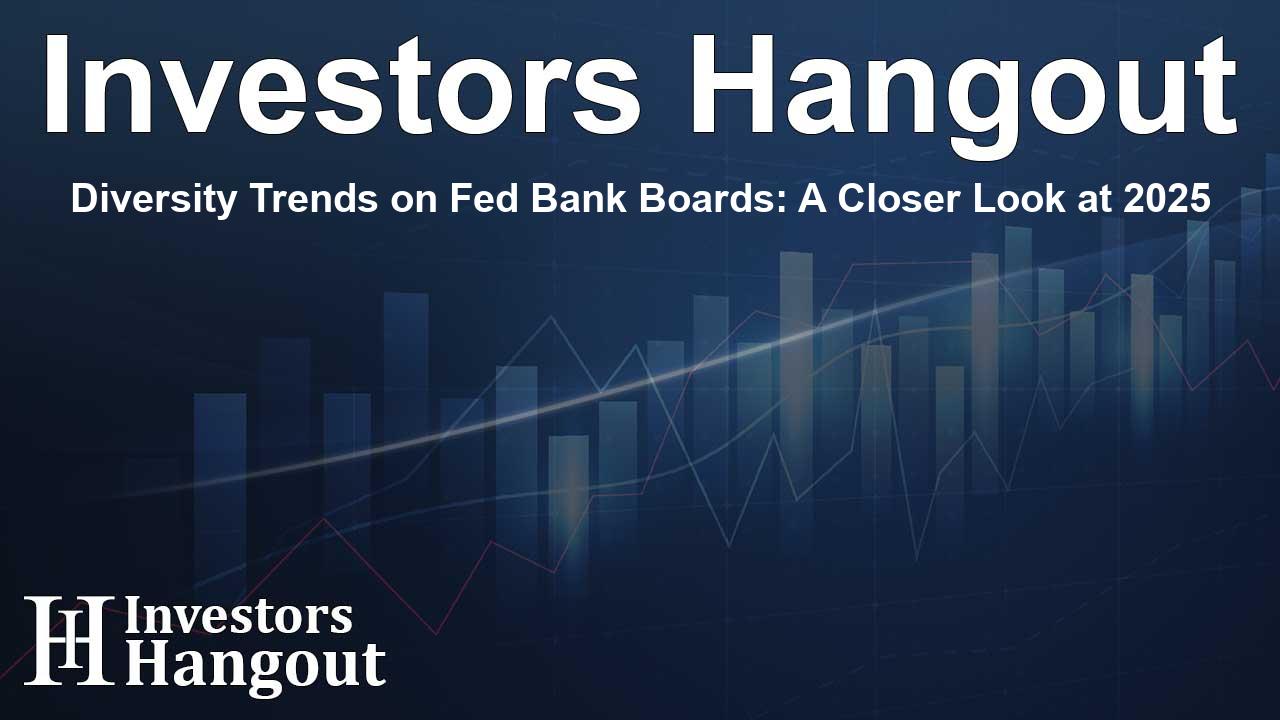Diversity Trends on Fed Bank Boards: A Closer Look at 2025

Diversity in Federal Reserve Bank Leadership in 2025
The boards of directors at the Federal Reserve's 12 regional banks have shown promising growth in diversity this year, especially regarding gender and race. A recent analysis highlights that while overall leadership positions are more diverse, the chairs and deputy chairs have not followed the same trend.
Status of Women and Minority Representation
Women hold 10 out of 24 leadership roles within the Fed bank boards, maintaining their presence from the previous year. However, there has been a decline in minority representation among chairs, with only 11 of them identifying as Black, Hispanic, or otherwise non-white, compared to 14 last year. This indicates that while some progress has been made, challenges remain in achieving broader diversity at the top levels.
Current Diversity Statistics
Looking at the bigger picture, overall diversity has improved across the Fed bank boards. Of the 108 total positions, 43% are now held by women, a noticeable increase from 39% last year. Similarly, the representation of people of color has risen to 39%, up from 37% in the previous year. These statistics show an ongoing commitment to improving diversity.
Efforts to Improve Representation
The Federal Reserve Board, which selects the chairs and deputy chairs and plays a significant role in other appointments, has been dedicated to enhancing diversity among its directors. Historically, these boards were predominantly composed of white and male members, but efforts initiated several years ago aim to shift this landscape.
The Impact of Diverse Perspectives
The directors do not set monetary policy but provide valuable insight into economic and credit conditions. Their diverse backgrounds and experiences are seen as crucial in enriching discussions and policymaking. Central bankers emphasize that such diversity in perspectives helps avoid overlooking vital aspects of the expansive U.S. economy, which is valued at approximately $23 trillion.
Critiques and Discussions Surrounding Diversity Initiatives
While the strides toward inclusion are commendable, some critiques arise. A report from the Manhattan Institute suggests that the Fed may have overcorrected for its earlier lack of diversity, calling for a more balanced approach that also considers political representation among its directors. It argues that efforts to achieve diversity should not overshadow the necessity for a variety of viewpoints in terms of political beliefs.
Political Neutrality in Monetary Policy
Despite discussions surrounding political representation, U.S. central bankers maintain that political considerations should not affect monetary policy decisions. They strive to foster an environment where diverse views contribute positively without partisan influences.
Concluding Thoughts on Diversity in Leadership
The evolving composition of the Federal Reserve bank boards underscores a commitment to diversity and inclusion that reflects broader societal changes. As the Fed continues to work towards ensuring a balanced representation, the focus will remain on fostering a diverse leadership that can better serve the economic needs of a diverse population.
Frequently Asked Questions
What does the increase in diversity on Fed boards indicate?
The increase suggests a growing commitment to better representation which can improve policymaking through varied perspectives.
How many leadership roles do women hold in Fed bank boards?
Women currently hold 10 out of 24 leadership roles within the boards.
Have minority representation levels increased or decreased?
Minority representation among chairs has decreased, while overall representation on the boards has increased.
Why is diversity considered important for the Fed?
Diversity ensures that a variety of economic perspectives are considered, leading to more comprehensive policymaking.
What challenges does the Fed face regarding diversity?
The Fed faces challenges in maintaining balance among different types of representation, including gender, race, and political viewpoints.
About The Author
Contact Riley Hayes privately here. Or send an email with ATTN: Riley Hayes as the subject to contact@investorshangout.com.
About Investors Hangout
Investors Hangout is a leading online stock forum for financial discussion and learning, offering a wide range of free tools and resources. It draws in traders of all levels, who exchange market knowledge, investigate trading tactics, and keep an eye on industry developments in real time. Featuring financial articles, stock message boards, quotes, charts, company profiles, and live news updates. Through cooperative learning and a wealth of informational resources, it helps users from novices creating their first portfolios to experts honing their techniques. Join Investors Hangout today: https://investorshangout.com/
The content of this article is based on factual, publicly available information and does not represent legal, financial, or investment advice. Investors Hangout does not offer financial advice, and the author is not a licensed financial advisor. Consult a qualified advisor before making any financial or investment decisions based on this article. This article should not be considered advice to purchase, sell, or hold any securities or other investments. If any of the material provided here is inaccurate, please contact us for corrections.
